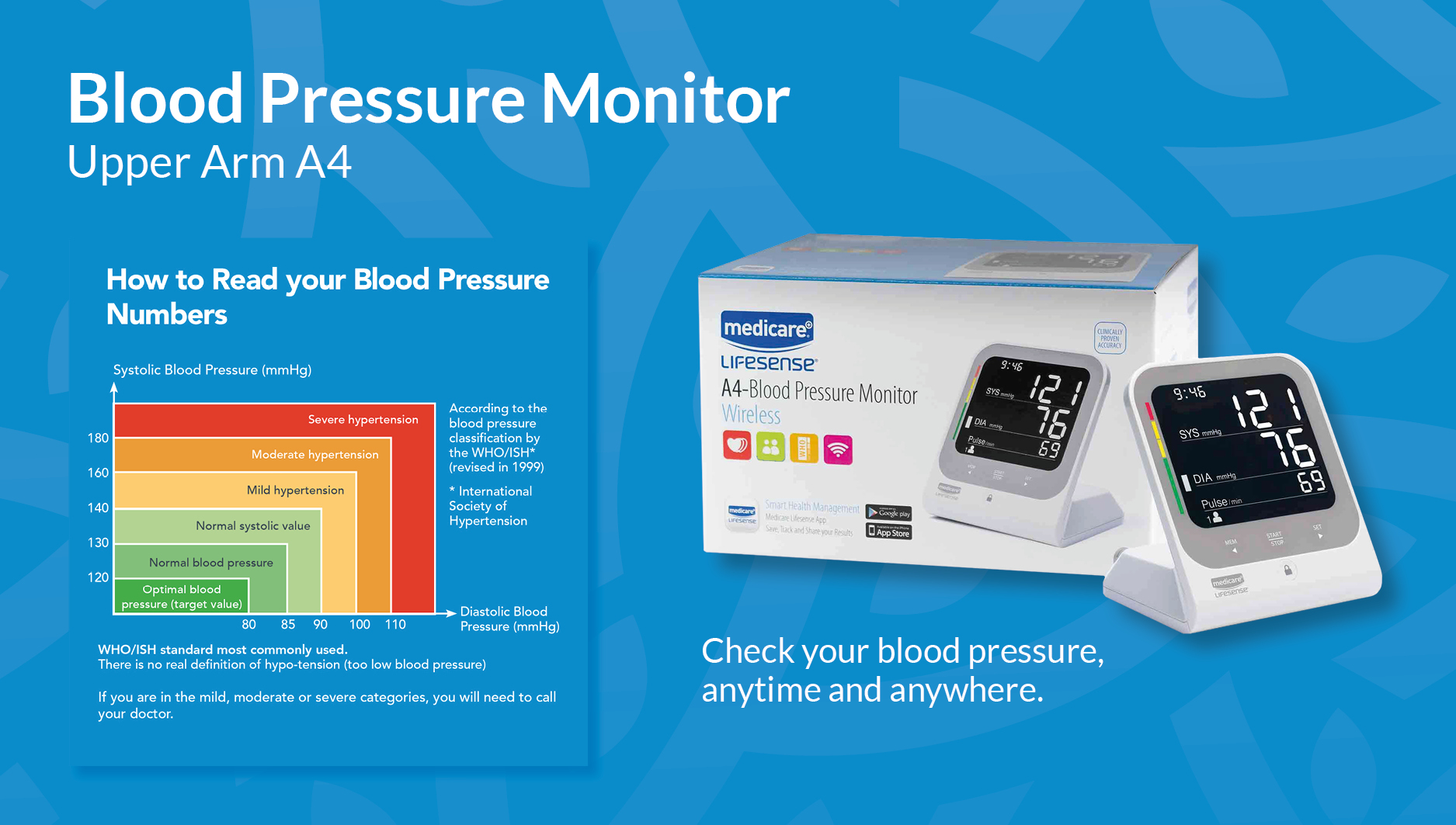
Knowing how to manage and monitor your blood pressure is critical to your overall health as it can prevent other health issues.
Understanding what blood pressure is and what your healthy blood pressure number is, can help you understand quickly if something is wrong and alert you when you should seek medical advice.
What is Blood Pressure?
Blood pressure is a measure of the force that your bodies heart uses to pump blood around your body.
There are two numbers that measure the level of blood pressure:
Systolic pressure: the pressure of the blood when your heart beats to pump blood out
Diastolic pressure: the pressure of the blood when your heart rests in between beats
They are both measured in millimeters of mercury (mmHg).
The normal level of blood pressure measures 120 (systolic) over 80 (diastolic). Anything that is over should be checked and discussed with a doctor.
High blood pressure is considered 140 systolic over 90 diastolic or higher. Low blood pressure is considered 90 systolic over 60 diastolic or lower. Low blood pressure is less common. Some medicines can cause low blood pressure as a side effect. It can also be caused by several underlying conditions, including heart failure and dehydration.
Blood pressure readings between 120/80mmHg and 140/90mmHg could mean you are at risk of developing high blood pressure if you do not take steps to keep your blood pressure under control.
Hypertension (High Blood Pressure) is known as the “silent” killer affecting over billions of people worldwide. It rarely has noticeable symptoms and if left untreated, it can cause stroke, heart disease and even kidney failure. Several factors combine to raise blood pressure and high blood pressure tends to run in families.
Those who are at higher risk of hypertension are:
People with diabetes; type 1 or 2
Over 65 years of age
People who consume large amounts of alcohol and tobacco
Individuals who are overweight
Individuals who have high cholesterol levels
The issue with Hypertension is that many people do not know that they have it which makes monitoring and managing blood pressure so vitally important.
Simple steps to follow when monitoring blood pressure at home:
Avoid smoking, exercising, drinking caffeinated beverages and alcohol within 30 minutes before measuring
Rest in a chair for 5 minutes before measuring with left arm resting comfortably
Ensure you are relaxed with back supported to the chair and feet are flat on the floor
Place the bottom of the cuff at the crook of your elbow
Take two readings a day:
One in the morning before taking any medication
One in the evening before dinner
The next step is to then read your blood pressure numbers
Prevention and Treatment:
You can take effective steps to prevent high blood pressure by:
Losing weight if you need to/maintaining healthy weight
Exercising regularly
Eating a healthy diet
Reducing your consumption of alcohol
Stopping smoking
Cutting down on salt and caffeine
Regularly monitor blood pressure at home and taking prescribed medications
All Medicare Blood Pressure Monitors offer systolic and diastolic blood pressure measurement as well as heart rate and irregular heartbeat detection.
For more information about managing high blood pressure by the Irish Heart Foundation - CLICK HERE